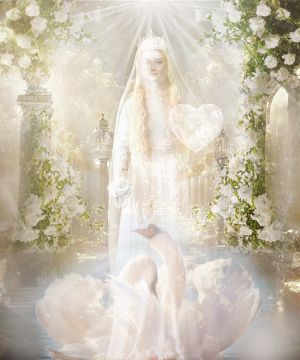Brigid: Difference between revisions
No edit summary |
|||
| Line 6: | Line 6: | ||
==Celtic Origins== | ==Celtic Origins== | ||
The Celtic Imbolc, or Brigid, is | The Celtic Imbolc, or Brigid, is known as the season for purification and new beginnings, the Goddess of the Holy Swan is the Mary Magadalene grail maiden [[Brigid]], it is she that announces the arrival of spring through the Imbolc festival. The Irish Brigid or Bridget served as a goddess as the divine patron of the Brigantes, the powerful northern tribe led by the warrior queen Cartamandua at the time of Roman Conquest. With the arrival of Christianity, Brigid became a Saint celebrated as Jesus's nursemaid and sometimes as his mother under the name of [[Mary of the Gaels]]. In Britain, the cult of the swan is likely to have come under the protection of Bride, whose feast day, 1st February, marked the northern departure of the migrating swans.<ref>[Cygnus Mystery by Andrew Collins]</ref> | ||
==References== | ==References== | ||
Revision as of 02:19, 2 January 2024
The Goddess of the Holy Swan, White Queen Brigid as a Mary Magdalene Grail Maiden Solar Dragon of Éire, is one section of the Cosmic Mother's White Diamond Sun trinity that unites the Triple Solar Reisha's Merida-Guinevere-Brigid, which are being retrieved for the seating of the Bride of Christ architecture throughout the Albion network, which includes the restoration of her Holy White Swan consciousness body in Avebury Henge. Through restorations, it was revealed that Avebury Henge and Stonehenge were instrumental in supporting the NAA death cult worship of assorted Black Dragon Archon Imposter Spirits forming the Dark Mother global network. Through Guardian Host projects, the return of the Bride of Christ includes the restoration of Solar Dragon Queen Merida's White Rainbow Peach Solar Dragon, seating into the 11th dimensional Stonehenge Stargate.
During Guardian Hosted grid projects, the Holy Risen Cosmic Bethlehem Lady assisted by Brigid's Holy White Swan in Cosmic Mother's Solar Dragon started to appear in through Cygnus Constellation and the Cassiopeia reclamations during the 2021 Electrical Peak cycle. [1]
Celtic Origins
The Celtic Imbolc, or Brigid, is known as the season for purification and new beginnings, the Goddess of the Holy Swan is the Mary Magadalene grail maiden Brigid, it is she that announces the arrival of spring through the Imbolc festival. The Irish Brigid or Bridget served as a goddess as the divine patron of the Brigantes, the powerful northern tribe led by the warrior queen Cartamandua at the time of Roman Conquest. With the arrival of Christianity, Brigid became a Saint celebrated as Jesus's nursemaid and sometimes as his mother under the name of Mary of the Gaels. In Britain, the cult of the swan is likely to have come under the protection of Bride, whose feast day, 1st February, marked the northern departure of the migrating swans.[2]


